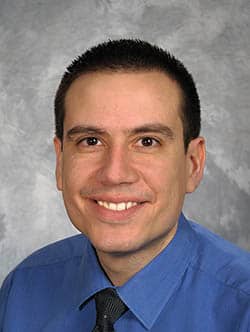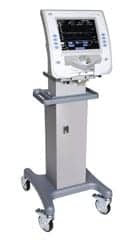By Valdez Bravo
?
The layout of biomedical engineering departments tends to be somewhat limited—a wide open space populated with workbenches, cabinets containing parts and test equipment, common use office equipment, and perhaps an administration area for the department director and support staff. If you are lucky, you might even have a small parking area for equipment that is being repaired. If you are very lucky, you may even have your own mechanical shop.
Thinking back to my days in the US Army, it seems that I always arrived at a duty station about 6 months before my chief left and a new one arrived. One thing that cracked me up was that the new chief would always assert himself by moving the workbenches around. If the workbenches faced the wall, they would be moved inward and facing one another. If they were inward and facing one another, facing the wall would seem to be the big improvement. However, at the end of the day, you still had the same number of workbenches and amount of square footage.
In my current department, we had an interesting problem with space. We began partnering with the fledgling biomed program at our local community college, taking on co-operative education students who need on-the-job training hours. At first, we hosted one student at a time, two maximum, simply because we did not have a place to put more. Soon, though, we started losing staff during a mass wave of Baby Boomer retirements. I took on more work-study students and volunteer staff as well. At one point, we had eight ancillary staff working at a time. This was a blessing, to be sure—especially when our staffing level of full-time employees was down to 50%. However, even before we started hiring techs to occupy all of those empty solder-burned workstations, we sometimes had space issues. We were running out of space for all this new help!
One of the Baby Boomers who retired left behind a great work area. He was our resident infusion pump expert and had been responsible for testing many other common use items in the hospital as well, such as feeding pumps, SCDs, heating pumps, and suction units. Many of the test jigs and parts were housed in various hiding spots in his old cube. These devices, often being simpler in design than other devices and well-suited for entry-level technicians, were the main source of work that I directed to our students, volunteers, and interns to handle. However, there was a lot of confusion whenever I had more than a few people coming and going trying to do the work.
Improving Workflow
That is when I decided to create a common use workspace. The space that our infusion pump tech had vacated was in the center of the shop, and because of the amount of activity in that area, it felt almost like it was the hub of the operation. So that is what we called it: the HUB. We came up with a definition to fit the acronym: health care utility bay.
The intent was to create a space that anyone could walk into and utilize. The two benches in the area did not belong to anyone in particular, just as the parts, tools, and test jigs did not belong to anyone. We set up infusion pump test kits that were never dismantled, with permanent infusion controllers to test the channels. The computers in this area were loaded with the various types of diagnostic software needed to test the infusion pumps, as well as test other devices such as the AEDs.
Physical test jigs such as fake legs with SCD cuffs were set up, and we parked Metro rack shelving in the middle of the HUB so our central sterile supply techs would have a destination drop point for the common use items they brought over every day.
We instructed our technicians who worked in the HUB to clean up after themselves each day, and to leave the tools and test equipment there at the end of the day.
What we soon had was an area that allowed for a part-time employee to arrive at work, sit down, and begin work on broken devices with little or no direction. Having the HUB centrally located ensured that we had seasoned techs all around to supervise, check work, and answer questions from the “HUBsters.” If the HUB is full, HUBsters perform work on the floors or shadow our more senior technicians. I try not to burn out entry-level staff on infusion pumps. We try to mix it up and vary their experience so that their enthusiasm for the job grows with their skill set.
Past managers had voiced concerns about taking on too many part-time staff, but with a HUB we no longer have this problem. I encourage other departments to create a HUB or common use space like it, and to reach out and engage local college electrical engineering technology programs. Students in today’s job market are eager for hands-on experience. Work experience at a hospital, in my mind, implies a certain added level of skill, given the critical nature of repairs/work done there and the type of professional behavior necessary when dealing with clinical staff.
Bringing on additional part-time staff of this nature is a great way to not only bolster your department manpower but to reinvigorate your present team. I have had senior technicians with more than 20 years of experience state that training and mentoring these new staff members makes them excited about the job all over again. For the department and the student, it really is a win-win. 24×7 Soapbox May 2013
Valdez Bravo is a biomedical engineering supervisor. For more information, contact [email protected].



